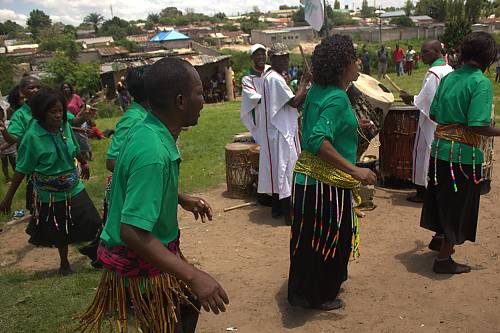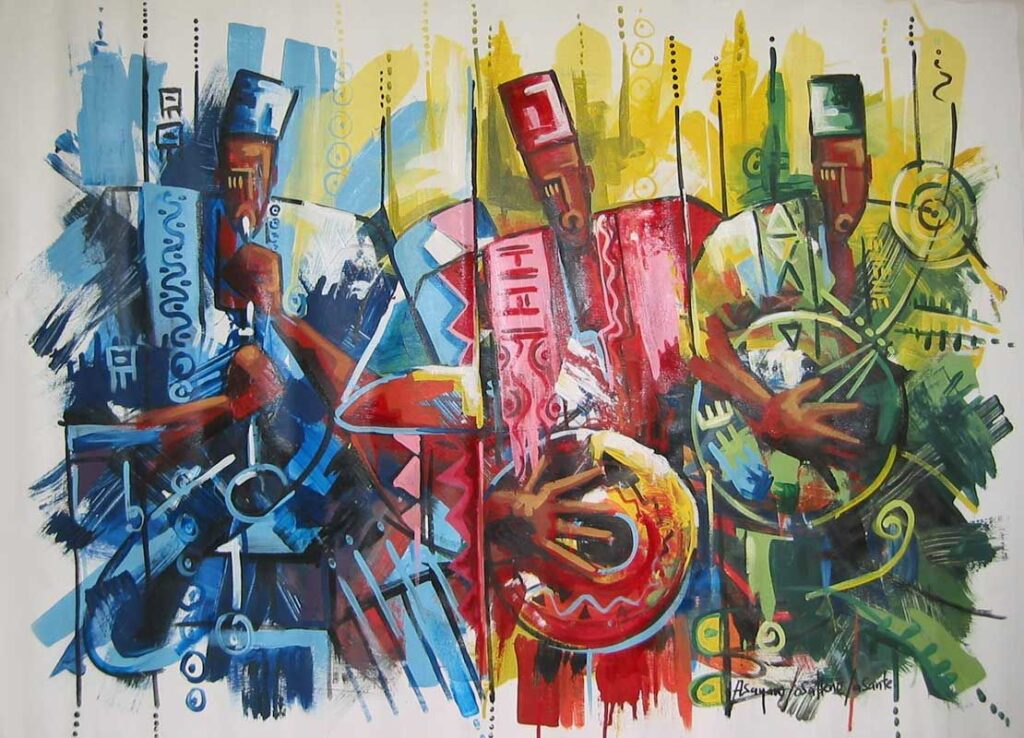The Zambian music industry stands at an extraordinary transformation point in 2025, experiencing remarkable expansion while maintaining deep connections to its cultural foundations. This dynamic musical ecosystem transcends mere entertainment it embodies the essence of a nation that has masterfully interwoven ancestral rhythms with contemporary global influences, forging a distinctive African musical identity that resonates across local and international boundaries.
Contemporary Landscape of Zambian Musical Expression
Zambia’s musical sector has undergone extraordinary metamorphosis throughout 2025, evolving from previous economic challenges into a vibrant creative powerhouse. The modern industry capitalizes on advanced digital streaming technologies, enhanced production standards, and an expanding youth population eager for both domestic and international musical content.
Yo Maps continues dominating streaming platforms with exceptional performance metrics throughout 2025, recently achieving AFRIMA nomination for Best Male Artiste in Southern Africa Award, competing against international heavyweights like Nasty C, Kabza De Small, and Tyler ICU. His collaborative releases with Roberto, including “Peace Of Mind” from his album “My Hero,” demonstrate sustained commercial excellence while maintaining authentic Zambian musical elements.
The financial ecosystem shows remarkable growth, with established performers achieving substantial commercial success through strategic digital distribution and live performances. Digital transformation has proven essential, with emerging platforms facilitating global music distribution across multiple countries, addressing historical distribution challenges that previously hampered industry development.
Leading Musical Figures Shaping Contemporary Zambian Sound

Yo Maps: Commercial Excellence Personified
Elton Mulenga, performing as Yo Maps, exemplifies commercial achievement in modern Zambian musical expression. His 2025 catalog demonstrates consistent ability to blend emotional narratives with widespread appeal, creating music that connects with diverse audiences while maintaining cultural authenticity. Recent collaborations with artists like T-Sean on “Tiliko” and continued releases through Olios Records showcase sophisticated production values and strategic market positioning.
Roberto: R&B Innovation Leader

Roberto Zambia continues establishing himself as the nation’s premier rhythm and blues artist through strategic partnerships and innovative releases throughout 2025. His musical output demonstrates sophisticated production approaches and cross-continental appeal, with recent singles like “Bestie” featuring Blood Kid and “Dear Phone” showcasing his versatility and market reach, Roberto is a Zambian artist worth calling an international artist.
Hip-Hop Pioneers: Chef 187 and Macky 2

The collaborative partnership between Chef 187 and Macky 2 continues defining Zambian hip-hop culture through innovative musical expressions and strategic brand development throughout 2025. Their joint projects with artists like KRYTIC on “Fokkof” and ongoing collaborations like Picasso Africa’s “Celebrate Life” demonstrate artistic chemistry that maintains their household name status while expanding their digital presence.
Emerging Talent Revolutionizing Musical Expression
Blood Kid: Kopala Movement Pioneer

Blood Kid Yvok has established himself as an influential force within Zambian musical culture throughout 2025, particularly within the Copperbelt region’s distinctive Kopala music movement. His breakthrough year includes major collaborations with Chef 187 and Dizmo on “Nalichinja,” which gained over 390,000 YouTube views within one month of release.
Growing up in Kitwe, he developed unique musical perspectives shaped by diverse cultural influences and urban experiences. His 2025 releases include “Samflossing,” collaborations with established artists like Chuzhe Int on “Chalyuma,” and features on tracks by Roberto and NSA Muzik. Blood Kid’s live performances demonstrate exceptional energy and audience engagement, contributing to his rapid ascension within Zambian musical culture.
Next Generation Musical Innovators
The current generation of emerging artists brings fresh creative perspectives to Zambian musical expression through innovative approaches and diverse cultural influences. Artists like Ndine Emma, who has collaborated extensively with Chef 187 on tracks like “Repeat” and “Inuma,” represent various regional backgrounds while contributing to the industry’s ongoing evolution and international recognition potential.
Triple M achieved significant recognition with “Mwana Wanga,” while Chanda Na Kay brought energetic performances through “Mapopwe” and collaborations with Blood Kid on “Chinja Intemba.” These performers demonstrate the depth of emerging talent driving the industry’s 2025 renaissance.
The Kopala Music Movement: Copperbelt’s Cultural Expression

Kopala music represents a unique cultural phenomenon emerging from Zambia’s Copperbelt mining communities, characterized by distinctive urban aesthetics blended with traditional Zambian musical elements. This genre originated within mining towns, reflecting experiences of contemporary youth in industrial centers like Ndola, Kitwe, and Mufulira.
The Kopala Swag movement, closely associated with this musical style, has created distinct subcultural identity within Zambian hip-hop, particularly throughout Copperbelt regions. Artists like Macky 2, recognized as the “King of Kopala Swag,” and Xaven the “Kopala Music Queen” have contributed significantly to this cultural phenomenon’s development and national recognition through releases and collaborative projects.
Blood Kid serves as a prominent representative of contemporary Kopala music, bringing regional stylistic elements to national attention through strategic digital marketing and authentic cultural representation. The genre incorporates hip-hop rhythms, dancehall influences, and traditional Zambian musical structures, often featuring multilingual lyrics combining local languages with English expressions.
This cultural movement extends beyond musical expression to influence fashion trends, linguistic patterns, and lifestyle choices among young people throughout mining communities. The Kopala identity represents pride in Copperbelt heritage while embracing contemporary global cultural influences, creating authentic regional musical expression that resonates nationally.
Traditional Musical Genres and Cultural Preservation
Kalindula: Community Musical Expression

Kalindula maintains its position as one of Zambia’s most enduring musical traditions, continuing to influence contemporary artists throughout 2025. This neo-traditional style successfully merges popular musical elements with authentic Zambian cultural foundations, featuring distinctive instrumental patterns that define the genre’s character.
Traditional kalindula utilizes locally crafted instruments including various stringed instruments and percussion elements, accompanied by rhythmic instruments that maintain cultural authenticity. Contemporary interpretations incorporate modern instrumentation while preserving essential rhythmic and melodic characteristics that connect current artists with historical musical heritage.
Zamrock: Cultural Revival Movement
The Zamrock phenomenon from the 1970s continues experiencing revival throughout 2025, with original bands like WITCH maintaining international touring schedules while new artists explore this distinctive fusion between Western rock influences and African musical traditions. This genre emerged during Zambia’s post-independence cultural renaissance and continues finding contemporary relevance.
Recent revival initiatives have restored international attention to Zamrock, demonstrating how traditional Zambian musical expressions achieve contemporary relevance and international appreciation. This cultural renaissance connects current artists with Zambia’s rich musical heritage while creating new opportunities for global recognition.
Cultural Instruments and Ceremonial Traditions
Zambian traditional musical culture employs diverse instrumental varieties across its numerous ethnic communities. Various percussion, string, and wind instruments continue preserving cultural heritage through traditional ceremonies and cultural celebrations. These instruments maintain essential roles in important cultural events and seasonal celebrations throughout the nation, providing foundation for contemporary musical innovation.
Contemporary Musical Genres Defining Modern Identity
Gospel Music’s Spiritual Renaissance

Zambian gospel musical expression has experienced substantial growth through innovative artists who blend traditional African rhythmic elements with contemporary spiritual themes throughout 2025. This genre successfully incorporates various musical styles including contemporary Christian, traditional African, and modern urban influences while maintaining spiritual authenticity.
Leading gospel performers continue innovating within this genre, creating musical content that appeals to both traditional religious communities and younger audiences seeking meaningful spiritual expression through contemporary musical formats. Artists like Talent Mulenga and various gospel collectives maintain strong presence throughout 2025.
Hip-Hop and Afrobeat Integration
Modern Zambian hip-hop, locally recognized as “Zed Hip Hop,” successfully incorporates local linguistic elements including Bemba, Nyanja, and Tonga with English to create distinctive musical expressions. Artists blend traditional rhythmic patterns with contemporary production techniques, creating music that addresses local experiences while engaging with global cultural trends.
Afrobeat influences from West African musical traditions have significantly shaped contemporary Zambian musical development throughout 2025, with local artists incorporating these international elements while maintaining authentic linguistic and cultural characteristics. This fusion creates unique sound that distinguishes Zambian music within continental African musical landscape.
Dancehall and Reggae Cultural Heritage

Zambian dancehall and reggae maintain substantial cultural influence through dedicated artists like Jay Rox who continue these musical traditions throughout 2025. Various performers contribute to ongoing development of these genres while maintaining connections to international reggae culture and local cultural expressions.
Artists participating in projects like “United Africa Riddim” demonstrate continuing vitality of reggae influences within Zambian musical culture, creating connections between local and international reggae communities while maintaining authentic Zambian cultural expression.
Digital Transformation and Distribution Innovation
Digital technological advancement has fundamentally transformed how Zambian musical content reaches global audiences throughout 2025. Multiple streaming platforms including Boomplay, Spotify, Apple Music, and YouTube have become essential components of artist success strategies, enabling local performers to achieve international recognition through strategic digital marketing approaches.
Local digital distribution services like Zamdigital enable Zambian artists to reach global markets through comprehensive platform integration including social media marketing and streaming service optimization. This technological infrastructure addresses historical distribution limitations while enabling artists to monetize content through multiple revenue channels.
Streaming performance data demonstrates that successful Zambian performers generate substantial income through digital platforms, with leading artists achieving significant monthly listener numbers across international markets. Yo Maps continues leading with exceptional streaming metrics, while emerging artists like Blood Kid demonstrate how strategic digital presence can accelerate career development.
Industry Challenges and Structural Limitations
Despite remarkable progress throughout 2025, Zambian musical culture continues confronting significant operational challenges. Content piracy remains problematic, with widespread unauthorized distribution reducing artist compensation and industry revenue potential. Limited recording infrastructure means many performers lack access to professional production facilities and equipment necessary for competitive content creation.
Investment capital presents another substantial challenge, with limited financial backing available for emerging artists or industry infrastructure development. Many performers must personally finance their careers, restricting their ability to achieve professional production standards or implement effective marketing strategies necessary for sustained success.
International recognition remains difficult for many talented Zambian artists, despite creating content comparable to internationally successful African musicians. Limited marketing resources and industry connections prevent many performers from accessing broader audience markets despite their artistic capabilities and growing local success.
Cultural disconnection represents an additional concern, as younger generations often lack familiarity with historical Zambian musical traditions that could enhance contemporary artistic development. This cultural gap limits artistic innovation potential and authentic cultural expression development within modern musical contexts.
Future Development Opportunities and Growth Potential

The Zambian music industry demonstrates exceptional potential for continued expansion through multiple positive development trends evident throughout 2025. Digital streaming adoption continues increasing as more Zambians access improved internet connectivity and mobile technology, creating expanded opportunities for artists to reach local and international audiences.
Demographic trends support continued industry growth, with substantial youth populations eager to consume and create musical content. Educational programs and mentorship initiatives could effectively develop this talent pool while maintaining cultural heritage connections that strengthen authentic artistic expression.
International collaboration opportunities continue expanding through successful partnerships between Zambian and international artists, demonstrated through Yo Maps’ AFRIMA nomination and various cross-border collaborations throughout 2025. These partnerships demonstrate market potential while helping local performers access broader audience markets and maintain cultural authenticity.
Festival culture and live performance opportunities continue developing through events that provide platforms for artist development and audience engagement while supporting local economic growth. The growing festival circuit provides essential revenue streams for artists while building audience loyalty and cultural community.
Government institutional support through cultural organizations and youth development ministries provides framework for continued industry advancement, particularly through recognition programs like the Kwacha Music Awards and cultural preservation initiatives that connect contemporary artists like Chile one with traditional musical heritage.
Conclusion: Zambia’s Musical Cultural Renaissance

The Zambian music industry in 2025 exemplifies remarkable cultural resilience and artistic innovation success. From the Kopala music movement emerging throughout the Copperbelt to international achievements by performers like Yo Maps achieving AFRIMA nominations and Roberto maintaining cross-continental collaborations, Zambian musicians demonstrate exceptional ability to honor traditional cultural heritage while embracing contemporary global musical influences.
Blood Kid and other emerging artists continue expanding creative boundaries within genres like Kopala music, while established performers maintain commercial success through strategic digital distribution approaches and international recognition. The revival of Zamrock and continued strength of kalindula demonstrate how traditional genres achieve contemporary cultural relevance.
The industry’s future appears exceptionally promising, supported by digital transformation initiatives, increasing youth cultural engagement, and expanding international recognition opportunities evidenced throughout 2025. While challenges persist, particularly regarding content piracy and infrastructure development, foundational elements for sustained growth remain firmly established through artist innovation, technological advancement, and cultural authenticity.
As Zambia progresses through 2025 toward 2026, its musical culture represents powerful testament to cultural expression’s role in building national identity while participating in global cultural conversations. The Zambian music industry transcends mere survival it flourishes, creating cultural soundtrack for both heritage preservation and future anticipation through continued artistic excellence, technological innovation, and authentic cultural expression that resonates both locally and internationally.









Leave a Reply